by Polina Gundarina (23/3) – German translation
The number of palaces across cities from Poland to Far East Russia – those of Socialism – is truly remarkable. From its beginning the Soviet government gained notoriety for constructing palaces for workers, with the earliest examples of these buildings now hailed as brightest monuments of Soviet architectural avant-garde. This “palatial realm” of socialist clubs endured throughout more than 70 years of Soviet history, extending its influence to other state socialist regimes following World War II. The history of houses and palaces of culture in the Soviet Union and East Germany (DDR) shares many similarities. Both socialist regimes supported these institutions as part of their social and cultural policies, aiming to promote the socialist way of life. While imbued with ideological messages, these buildings were also community centers for entertainment and leisure activities. The palaces in larger cities acted as prestigious showcases of socialist achievements, both for those within and outside the regimes. Despite the negative associations attached to them today due to the troubled past of socialism, palaces of culture played a vital role in the daily lives and remained significant even after the transformative 1990s. How their post-socialist transformation unfolded in Germany and Russia, and how their paths diverged along the way?
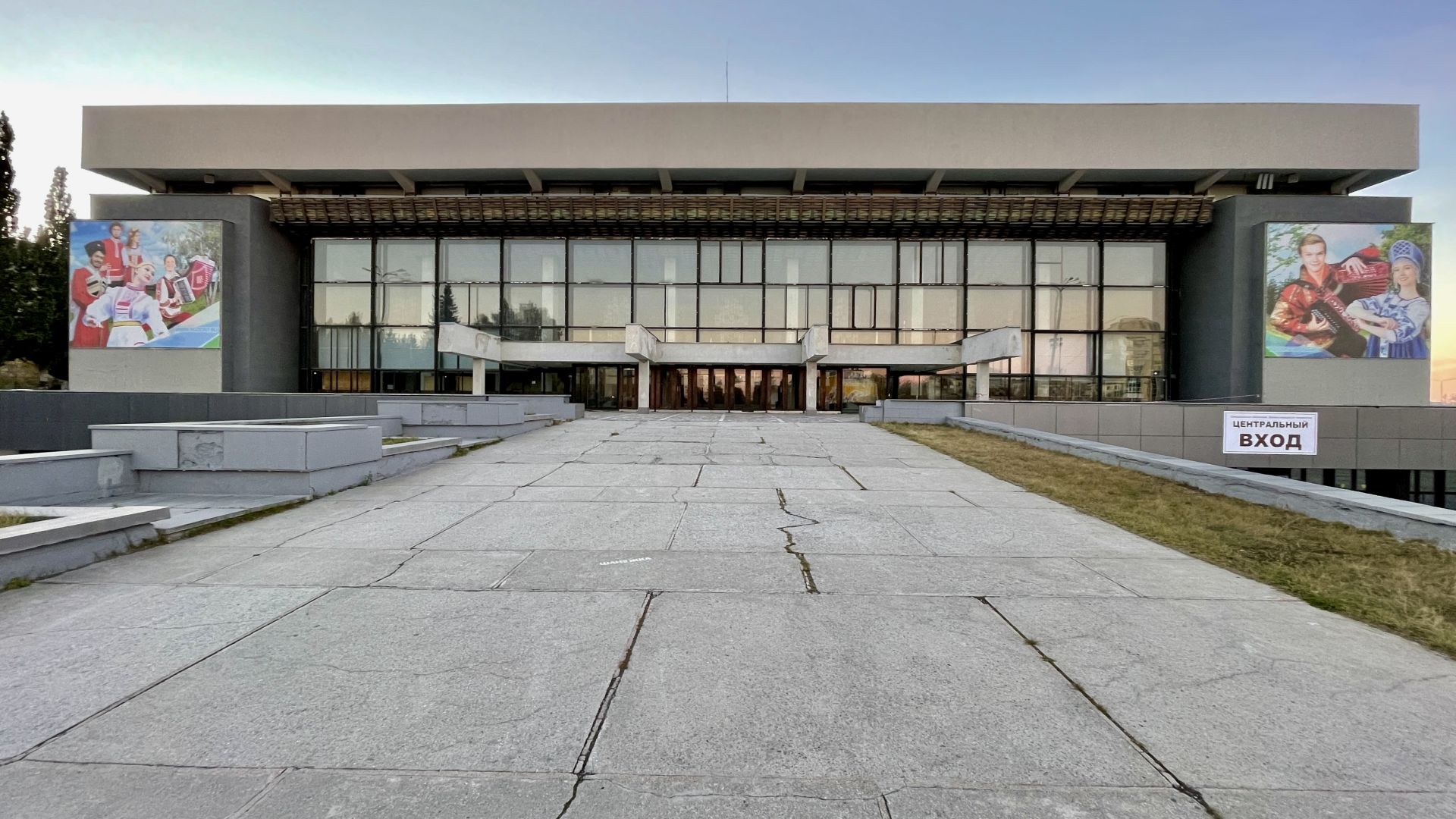
Yekaterinburg, Palace of culture Uralmash (photo: Vyacheslav Bukharov via Wikipedia.ru, CC BY-SA 4.0)
“We will teach you to understand the new architecture!” Postwar palaces of culture in Soviet Russia
The search for an architectural language to express the revolutionary romanticism of the Bolshevik Empire in the 1920s resulted in the finest examples of soviet architectural avant-garde. The Rusakov Club (designed by architect Konstantin Melnikov) and the Zuev Workers’ Club (designed by architect Ilya Golosov) stood out for their grand scale and impressive capacity, truly embodying the concept of “workshops of new men” as El Lissitzky envisioned. Fast forward almost 40 years, and the architectural paradigm underwent a dramatic shift. The lingering influence of international modernism, coupled with Khrushchev’s massive housing construction program, introduced a new urban unit in thousands of Soviet cities: the microdistricts (mikrorayony) with prefabricated housing blocks, or plattenbau. The microdistricts have become the most common urban typology, still defining the recognizable landscapes of former Soviet cities today. Since that time, houses of culture were strategically planned to be in close proximity to the housing blocks, ensuring their seamless integration into the surrounding urban fabric. In 1959, regulations were put in place, stipulating that clubs should be located no more than a ten-minute walk from residential areas. This highly rationalized approach in fact meant a literal provision of culture: 5.5 meters of cultural space per a habitant of mikrorayon.
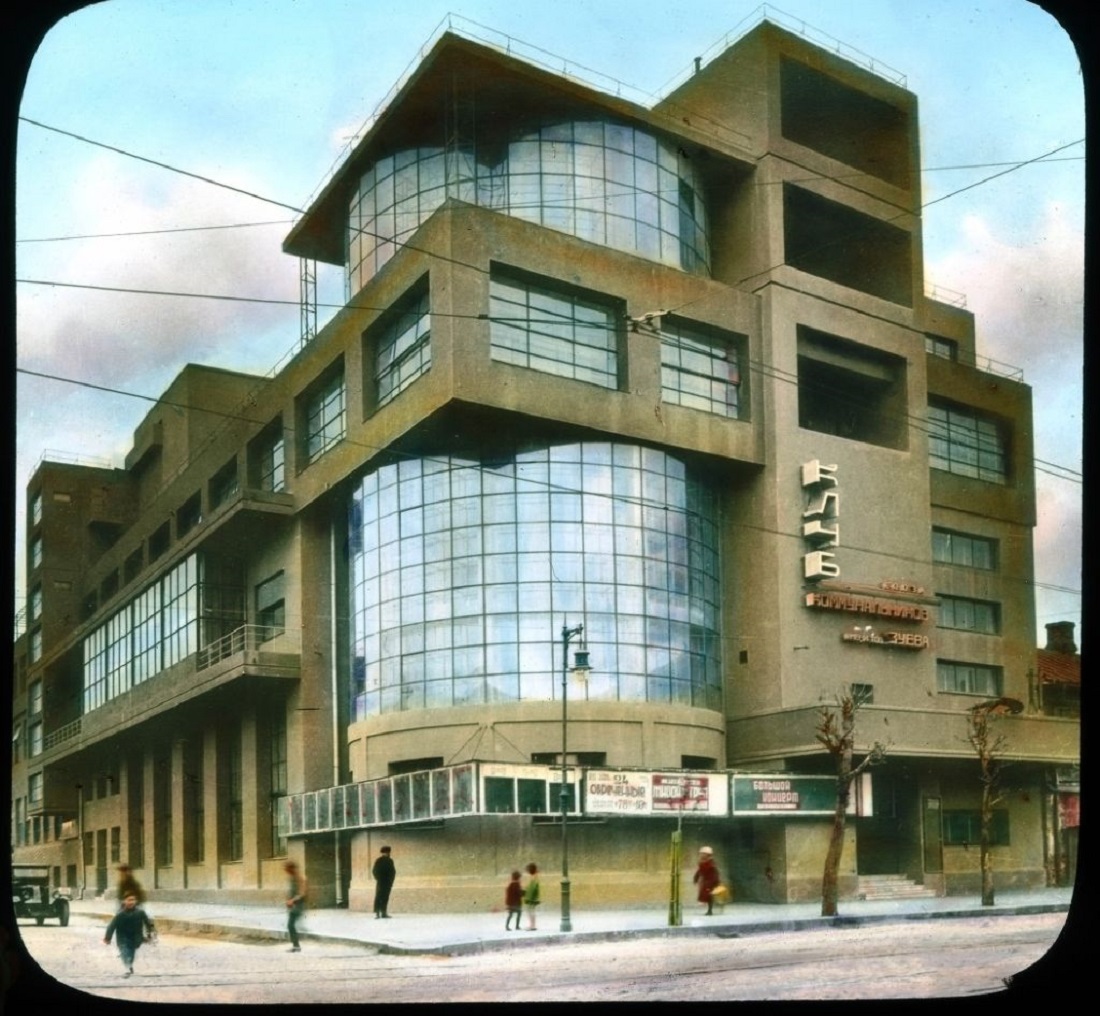
Moscow, Zuev Workers’ Club 1931 (photo: Branson DeCou via Wikipedia.de, CC0)
The aesthetics of postwar houses of culture were heavily influenced by the reforms brought about by Khrushchev. One notable example is the Pioneers Palace in Moscow (1958-1962), co-designed by the renowned Soviet modernist architect Felix Novikov. When Novikov and his colleagues presented the design to the Moscow executive committee, it initially faced harsh criticism. Novikov remembers: “Someone from the party sarcastically questioned: “Is this really a palace? Do we not know what palaces look like?”. Architect Lovyeko boldly responded, “Through this example, we will teach you to understand the new architecture!”. This marked the beginning of a new era in Soviet public building design. In the 1960s, the blueprint designs of houses of culture drew inspiration from Western architecture of the early decades and sought to revive the spirit of the 1920s Soviet avant-garde, which had been suppressed during Stalin’s rule. One widely replicated standardized project, known as “Yubileyniy” (Jubilee of the Revolution), illustrates this shift: it featured more open, spacious areas, wide corridors, and abundant use of glass to enhance natural light. This design was implemented widely across the USSR, from Barnaul to Yekaterinburg, from Novopolock (Belarus) to Novomoskovsk (Ukraine). The continued industrialization of mass housing infrastructure led to a significant expansion in the number of houses of culture: by 1975, state statistical departments reported a staggering figure of over 90,000 houses of culture in existence across the country.
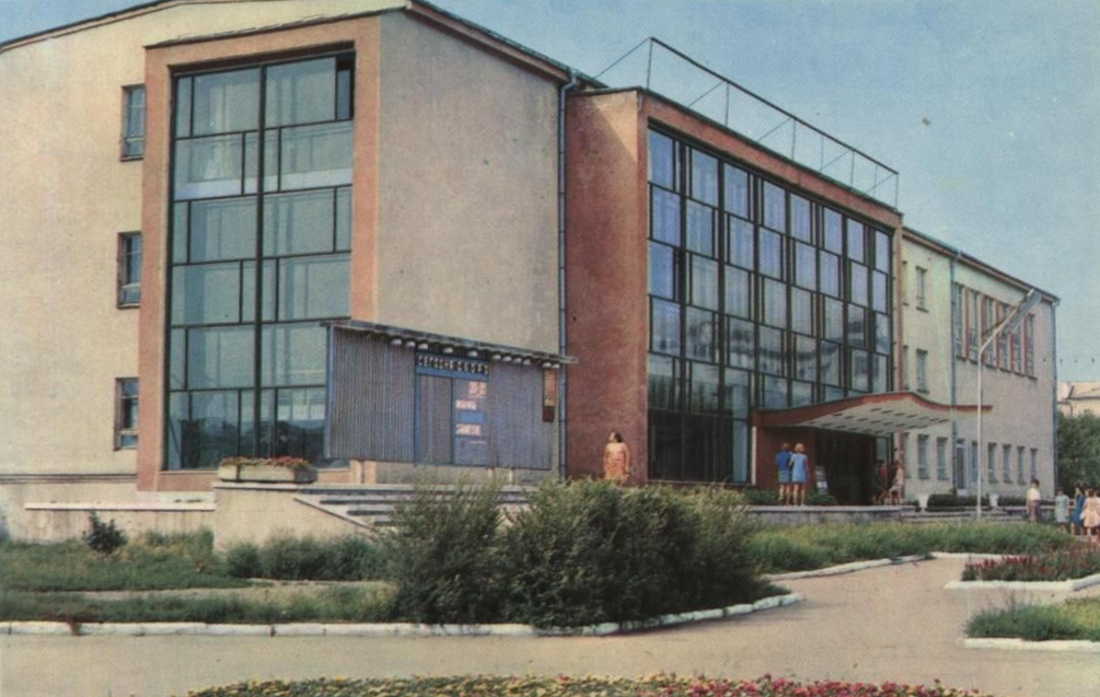
Barnaul, House of Culture for Chemists (DK Khimikov), Russia (historical Postcard 1971)
However, there have been rare instances where individual designs of palaces of culture in the postwar years came to fruition. This occurred when they were commissioned by state-recognized enterprises or when they played vital roles in newly developed urban areas. An example of this can be seen in the now-demolished Palaces of Culture “Svetlana” in Saint Petersburg, which were constructed under the orders of the electronic industry enterprises Svetlana and Pozitron. The leisure and recreational facilities provided for workers of these important factories held great significance for the local party bureau, especially when coupled with ambitious plans for then-Leningrad expansion and the creation of new microdistricts. The intended design of this palace of culture was grand, featuring two buildings, a pond, a swimming pool, and numerous rooms for performances and leisure activities. The construction remained incomplete during the Soviet era, and after 1991 the building gradually fell into a state of disrepair. Eventually, private developers purchased the property, and in 2007, the decaying palace of culture was demolished.
DDR Kulturhäuser: Soviet blueprint with a special touch
The concept of people’s houses, which had gained popularity in both the German and Russian empires during the late 19th century, played a significant role in shaping Soviet clubs as well as clubs established in Germany during the Weimar Republic. With the advent of socialist regimes, the objective of organizing leisure activities took on a new level of importance. Following the establishment of the German Democratic Republic (DDR) under Communist rule, a wave of new “palaces for workers” emerged throughout East Germany. These buildings copied from the Soviet Union’s concept of houses of culture, and at first they were implemented largely by the drive of cultural bureaucrats who had relocated from the Soviet Union.
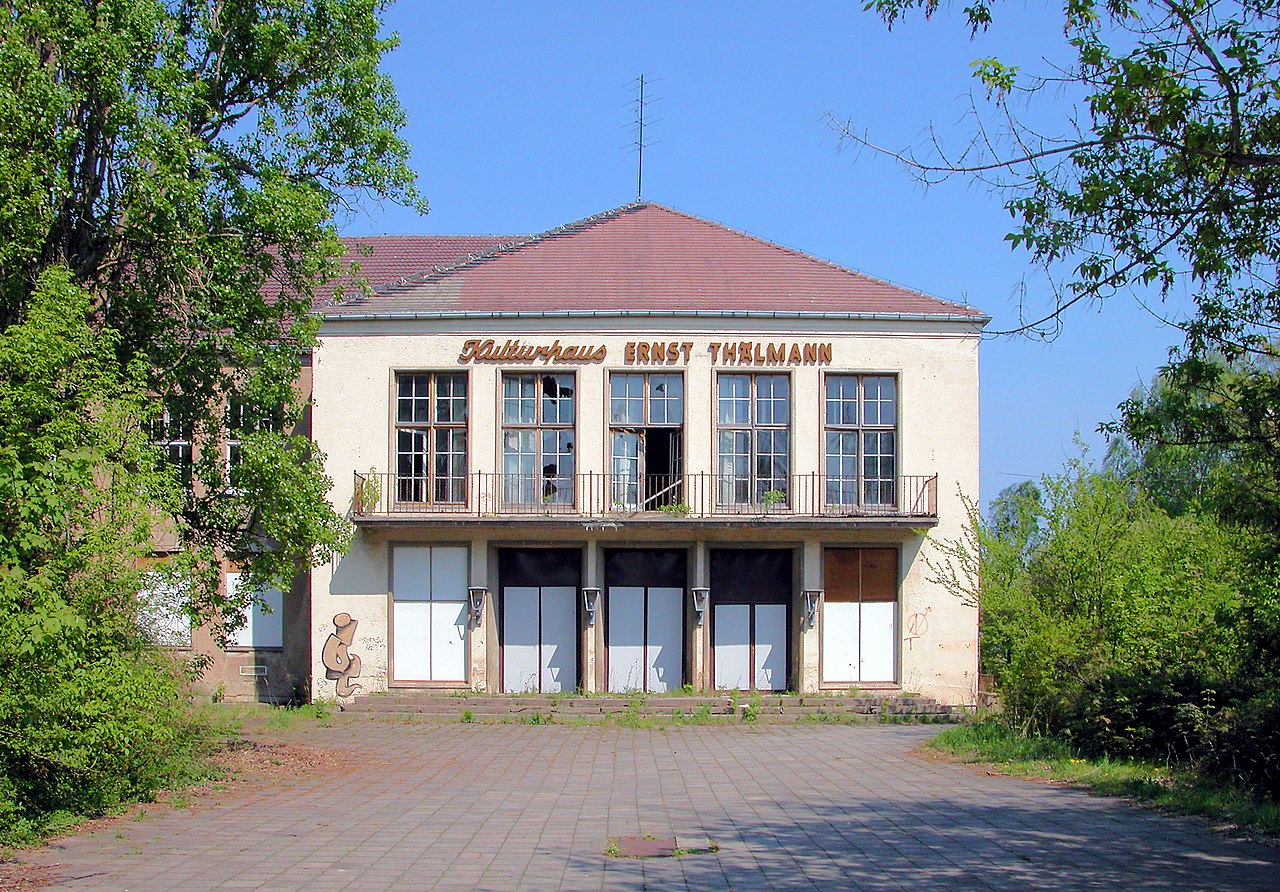
Krumpa, Kulturhaus Ernst Thälmann 2004 (photo: Jörg Blobelt, CC BY-SA 4.0)
In the 1950s, the first club buildings reflected the neoclassical style seen in the monumental Stalinist architecture. They featured spacious interiors, as exemplified by the palaces in Unterwellenborn, Schkopau, and Suhl. As the focus shifted towards housing construction from the mid-1950s onward, the emphasis on constructing grandiose clubs diminished. Nevertheless, architects and urban planners sought alternative architectural forms for the houses of culture, moving away from previous historicist style. Modernist design for houses of culture began to emerge in the early 1960s, exemplified by Palace der Republik in Berlin, Kulturpalast in Dresden, the Haus der Kultur in Neubrandenburg, and the Klubhaus der Zementwerker in Karsdorf. These buildings were typically commissioned by trade unions or factories, while the larger palaces in major cities were directly ordered by the Party or the Socialist government. The larger palaces in Berlin and Dresden, in particular, served as venues for official delegations gatherings, performances, concerts, and broadcasts of national or international events. However, the scale of construction for houses of culture in East Germany never reached the same level of quantitative and standardisation as in the Soviet Union, where a palace was built in nearly every microdistrict using mostly standardized designs.
Afterlife and post-socialist condition of houses of culture in Germany and Russia
In Russia, the experience has shown that repurposing large buildings with extensive areas for commercial purposes was a significant challenge. However, in the case of Yekaterinburg, the Palace of Culture UZTM of the Uralmash factory obtained regional center status and continued to function as a place for children’s recreation and a concert hall from the early 2000s. But many other modernist palaces barely survived the 1990s by renting out spaces for concerts and events, essentially continuing their function of providing leisure activities for the local residents to the best of their abilities. Nevertheless, amidst chaotic privatization and the crisis of market reforms, many palaces of culture lost their relevance, were privatized, demolished, or converted into small enterprises. However, their unique urban planning position — being the center of residential areas with ample public space around — is still appreciated by the city residents, as seen in the case of the Khimmash Palace of Culture in Yekaterinburg, when citizens, mainly parents of children involved in the palace, successfully protested against its demolition in 2018. Functionality, rather than aesthetics, remains the primary argument for saving palaces of culture and its function for the generation of Russians born after 1991.
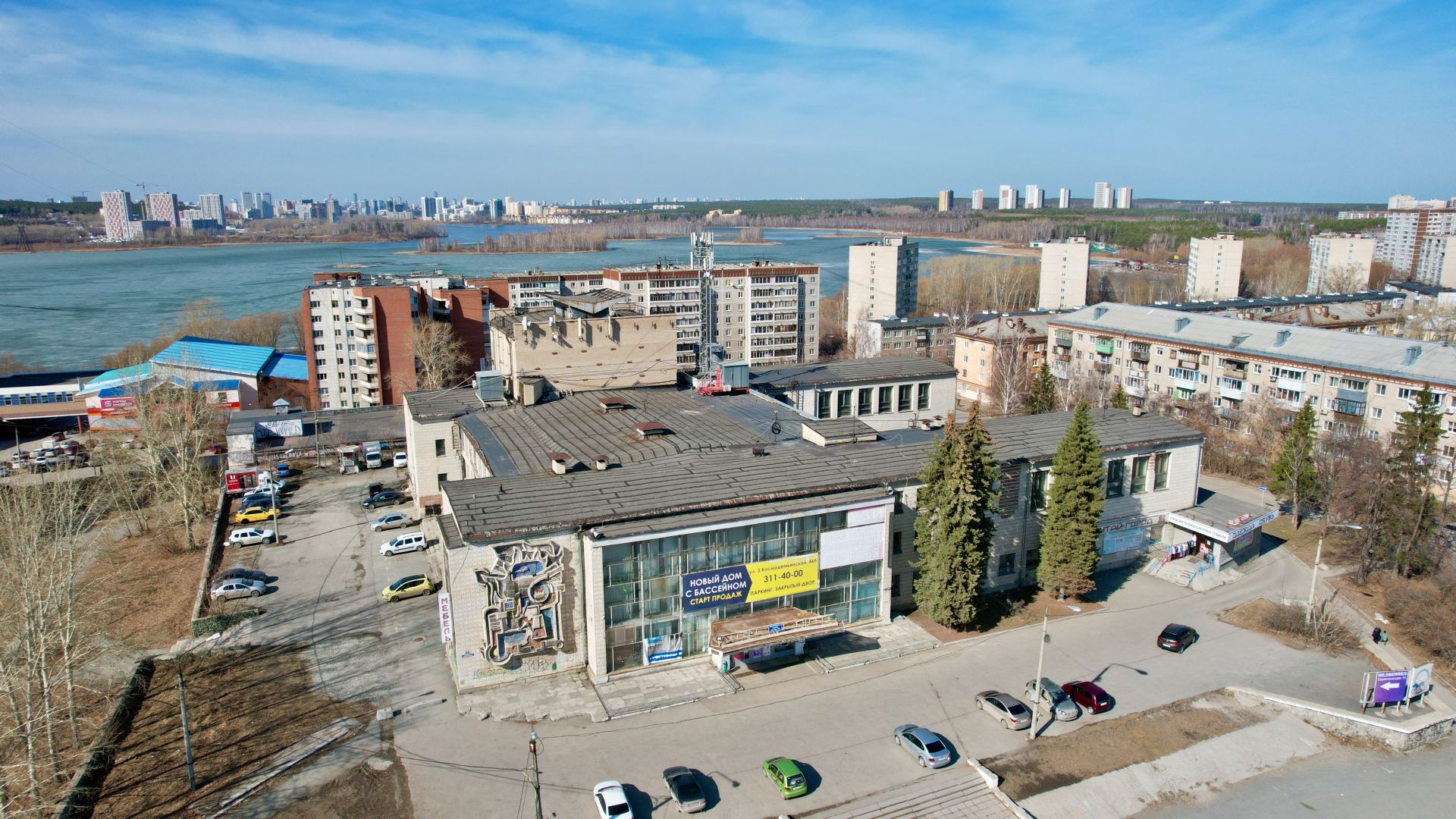
Ekaterinburg, Khimmash Palace of Culture in April 2023 (photo: Vyacheslav Bukharov, Wikimedia Commons, CC BY-SA 4.0)
Meanwhile, in East Germany, postwar palaces of culture are not as numerous as in Soviet Russia, but they encounter similar difficulties during their “afterlife”. Here, the cultural clubs were primarily built based on the “factory and palace of culture” principle, rather than having a club in every neighborhood. After 1990, they were either transferred to municipal ownership or relied on private investors. In small towns, only a few palaces of culture continue to function as intended, such as the Klubhaus-Wolfen in Bitterfeld and the Klubhaus in Hettstadt. But only a handful of postwar palaces of culture in both countries have been transformed and utilized for new purposes, while the rest continue to operate with limited funding and remain invisible to the rest of the city residents. The attempts to symbolically rethink the legacy of houses of culture are more visible in Germany. The renovation and enlistment as a monument of the Kulturpalast in Dresden in 2008 was a successful case of heritagisation, but the majority of other socialist houses of culture recognized as monuments are buildings that were built in the 1950s and before. However, the field seems rather positive: the current research and exhibition on the past of the Palace of the Republic in Berlin provides new impetus for rethinking the whole typology of these buildings. The former private investor of the Bitterfeld Kulturpalast, Matthias Gossler, and his legacy can become an example of a successful revitalization of an area with preservation of history, as happened in Potsdam with the socialist café Das Minsk.
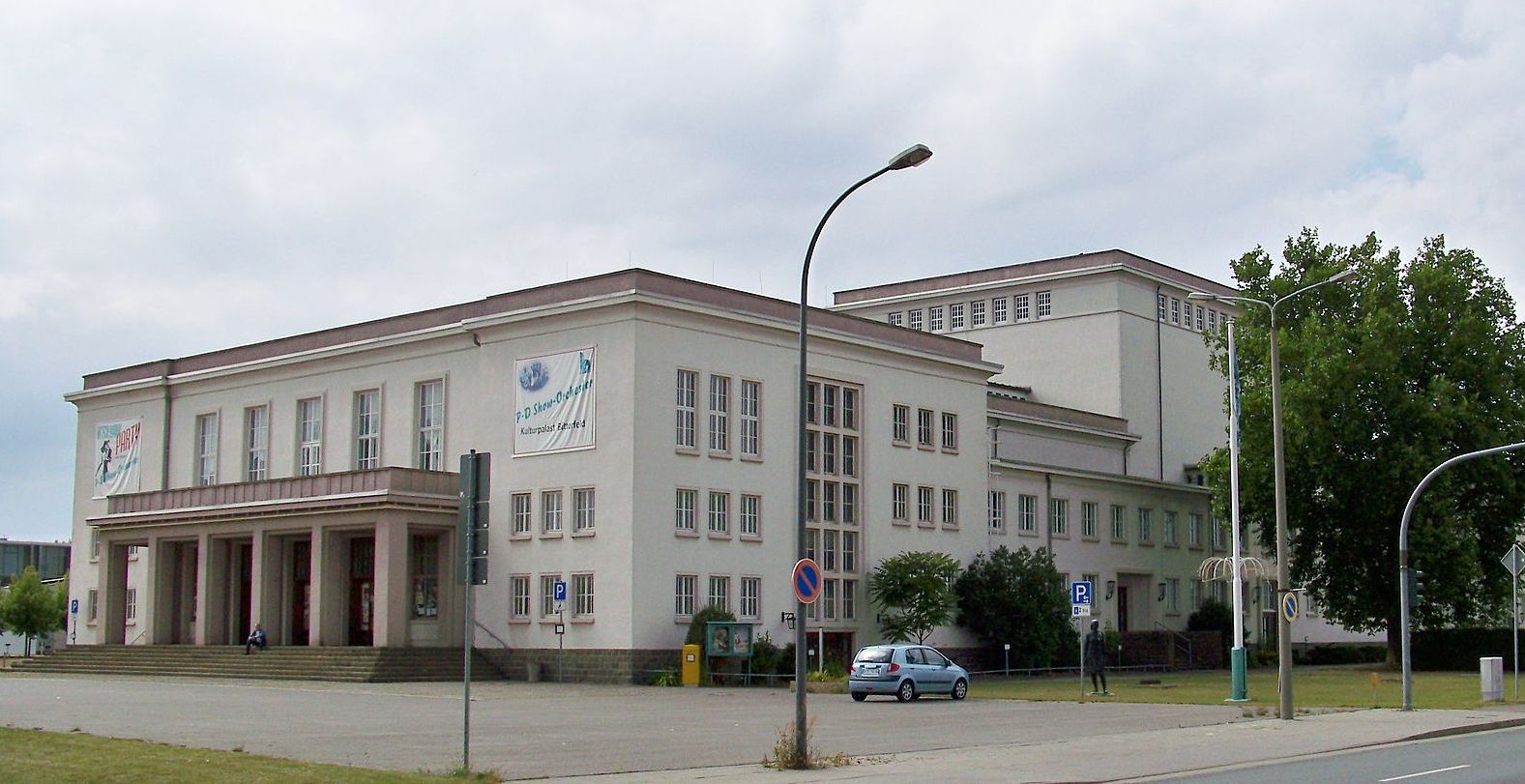
Kulturpalast Bitterfeld on Parsevalstreet in the Bitterfeld-Wolfen chemical park (photo: Joeb07, CC BY 3.0)
Meanwhile, in Russia, the protection of postwar modernist architecture relies fully on bottom-up initiatives. But with the current tightening of daily surveillance and creative freedom, and the latest news about the demolitions of the modernist Council House in Kaliningrad, a building for which DOCOMOMO has fought, send discouraging signals. Interestingly enough, this year the Russian government has shown interest in the concept of houses of culture by organizing a large exhibition of Soviet art under its name. There is no room for rethinking or discussing the past, but rather a clear sign of the celebration of the narrative of the “Soviet state of universal prosperity,” where culture was accessible to everyone for the upbringing of the true Soviet person. This is the first instance of including such an inconspicuous and everyday built legacy in the narrative of the shared Soviet past and the summon Soviet heritage, which strongly aligns with today’s domestic and foreign policies in the Russian Federation.
With this, the future of socialist palaces of culture hangs in the balance, their fate uncertain. During the Russian war in Ukraine, where postwar houses of culture, the heritage of Ukrainian modernism, have been destroyed, as happened with the Lozovaya Palace of Culture in the Kharkiv region, it becomes clear that a common approach to the treatment of the built legacies of socialist regimes is not possible. Recently, the attempts to de-sovietise urban space was brought up to light with the new force. But beneath the grand narrative of socialism, each local house of culture retains its own unique local history, interwoven with the memories of local residents. Can this reminder of community liberate this heritage from the negative associations of an oppressive past and pave the way for greater appreciation and recognition of houses of culture within society?
Download
Bonusbeitrag
Inhalt
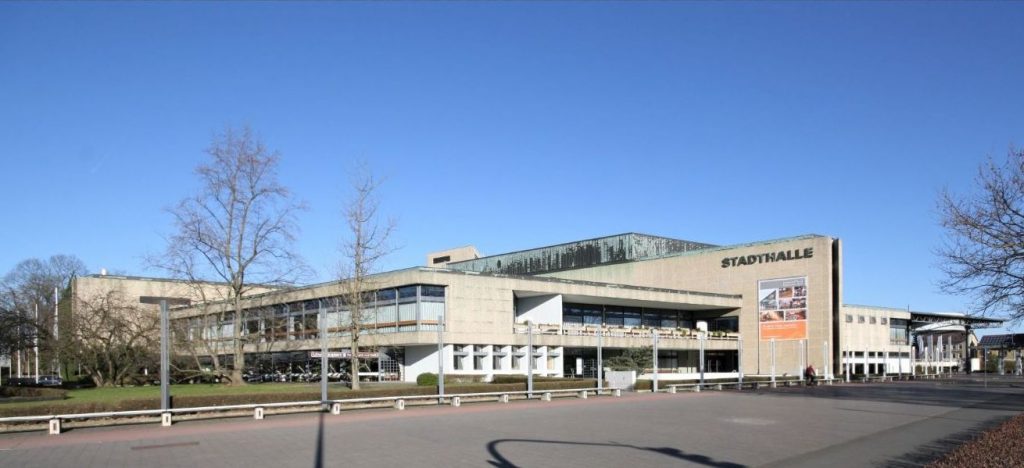
LEITARTIKEL: Kultur als Vermächtnis
Till Schauen über seine Tante, eine ganz bestimmte Stadthalle – und darüber, wieso beide stellvertretend für eine ganze Epoche stehen.

FACHBEITRAG: Avantgarde, volkstümlich
Zwischen Totaltheater und Totalsanierung: Daniel Bartetzko über die denkmalgeschützte Stadthalle Hattersheim.
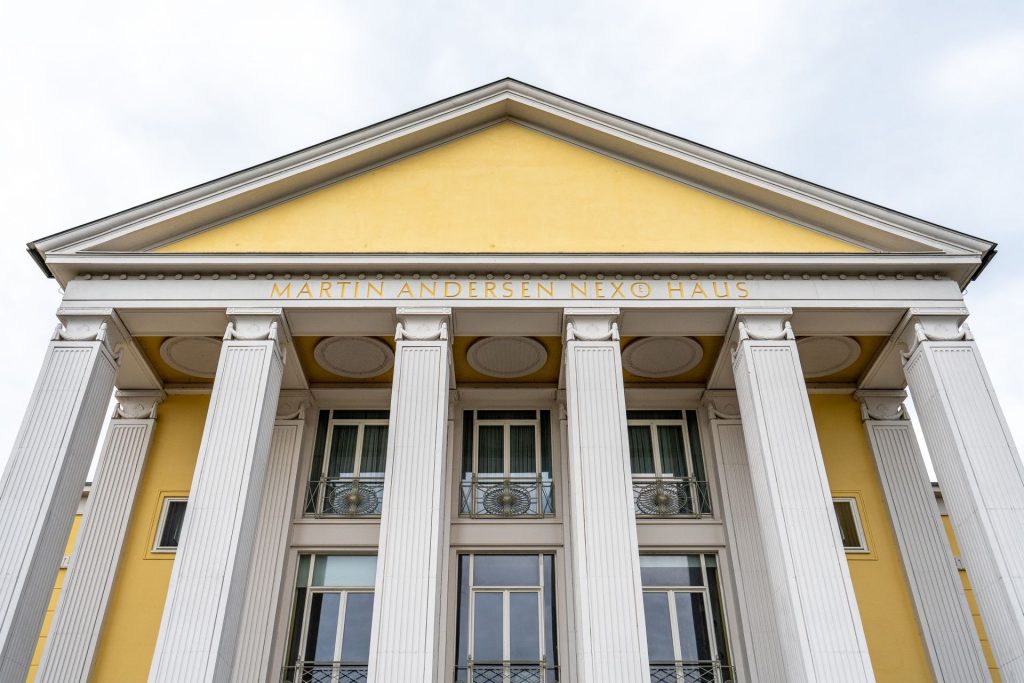
FACHBEITRAG: Die Akropolis von Rüdersdorf
Danuta Schmidt über eine neo-neoklassizistische Zeitkapsel – das Kulturhaus Rüdersdorf.
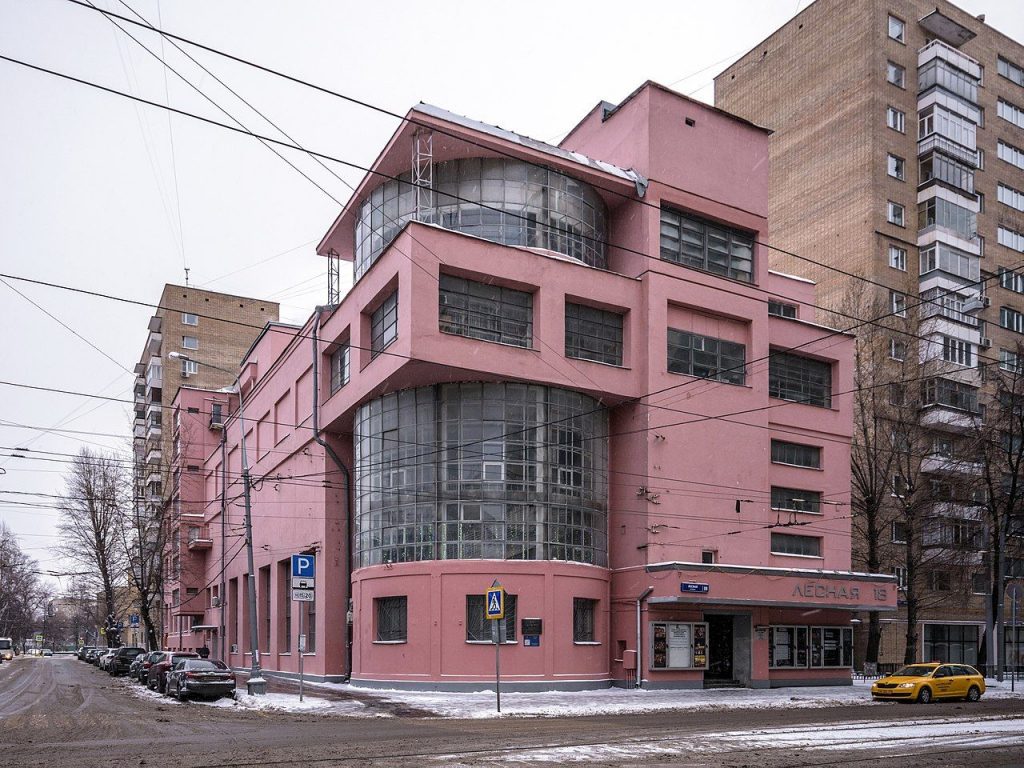
FACHBEITRAG: Eine Vergangenheit, eine Zukunft?
Polina Gundarina über die Geschichte russischer Kulturhäuser und ihrer DDR-Pendants nach 1990/91.
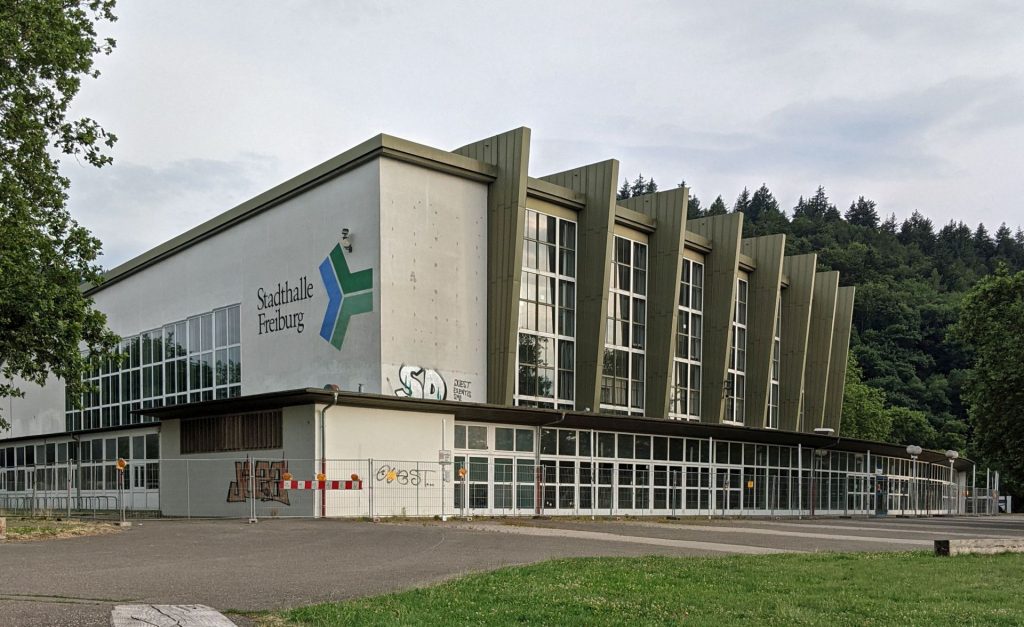
PORTRÄT: Feste Feiern in Freiburgs Festhalle
Maximilian Kraemer über die gesperrte Stadthalle Freiburg.
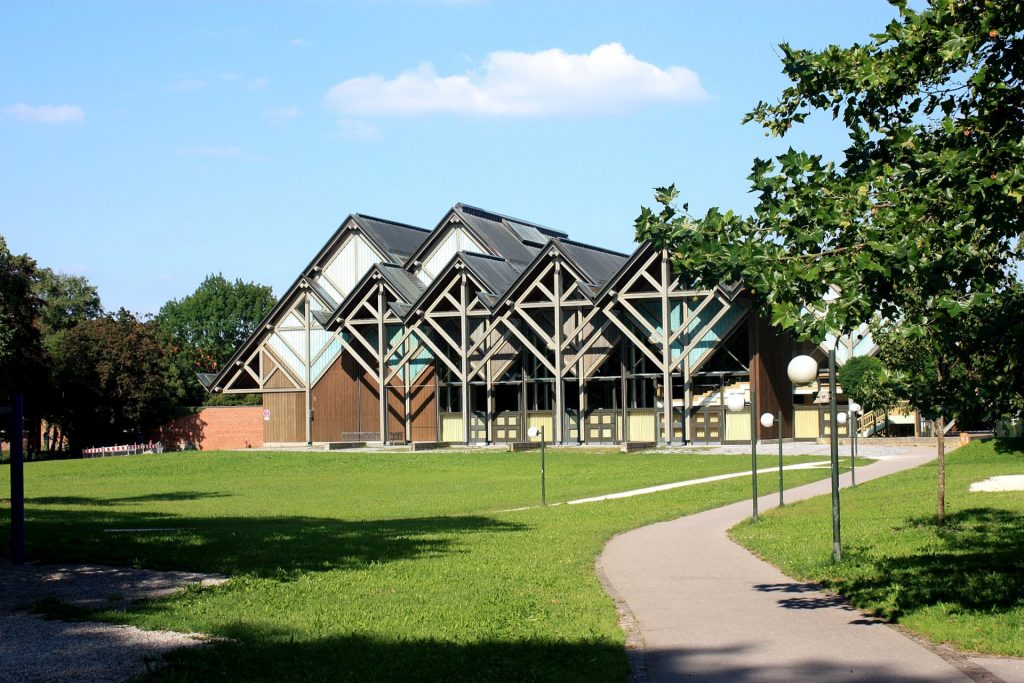
FOTOSTRECKE: Die Topmodels unter den Kulturhäusern
Wir zeigen unsere liebsten Stadthallen – in einer natürlich völlig objektiven Auswahl!
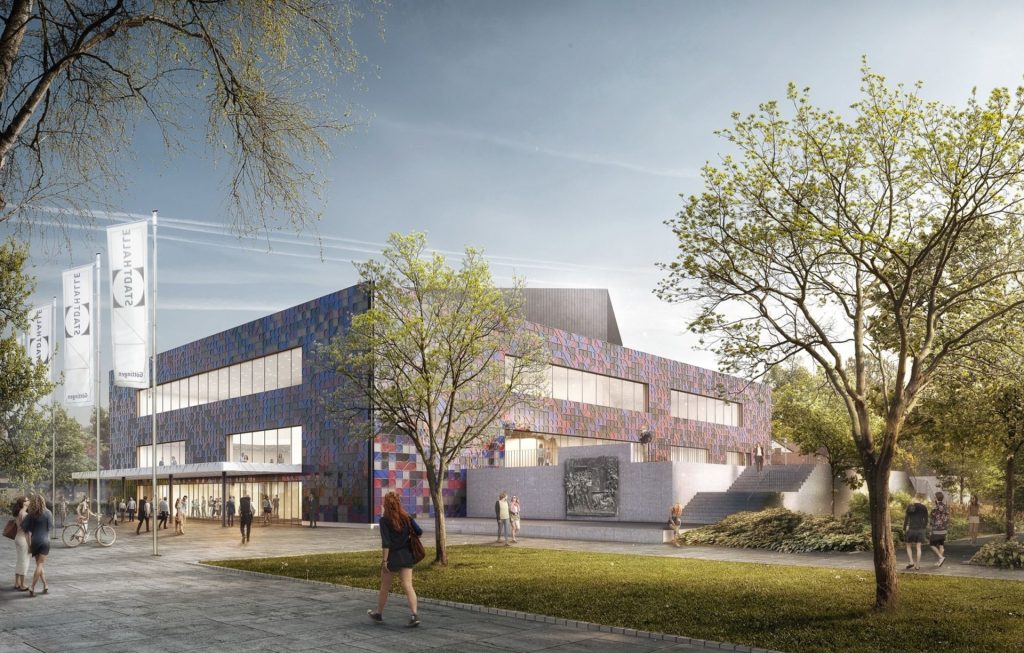
INTERVIEW: “Denkmalwürdig, aber nicht denkmalgeschützt”
Inga Soll, Heiko Sasse und Matthias Kraemer im Gespräch über die Sanierung der 1964 eröffneten Stadthalle Göttingen.
